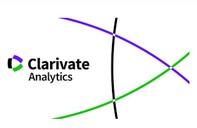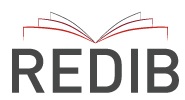The narrow range of perceived predation – a 19 group study
Abstract
This paper rests largely on the works of ---- (1999 to 2012). It argues that the phenomenon of perceived predation as a functional behavioural phenomenon is subjected within certain limits, a finding based on studies performed on 19 different groups spread over a four-year span. It also finds a constant of k = 1.3 which reflects the invariant nature of perceived predation. These findings add to the theory of financial predation which stipulates that financial predators operate below the limits of detection on the part of their customers (and of market regulators). They are experts at minimizing the perception that clients could have that they are after their money, causing them financial harm, by surprise (perceived predation). Understanding the narrow range in which financial predators operate is setting the grounds to offer better protection to investors and to implementing better control and punitive measures.
Downloads
The works published in this journal are subject to the following terms:
1. The Publications Service of the University of Murcia (the publisher) retains the property rights (copyright) of published works, and encourages and enables the reuse of the same under the license specified in paragraph 2.
© Servicio de Publicaciones, Universidad de Murcia, 2022
2. The works are published in the online edition of the journal under CC BY-SA 4.0 license, a Creative Commons Reconocimiento-CompartirIgual 4.0 (legal text). You are free to:
- Share: copy and redistribute the material in any medium or format for any purpose, even commercially.
- Adapt: remix, transform, and build upon the material for any purpose, even commercially.
The licensor cannot revoke these freedoms as long as you follow the license terms, under the following terms:
- Attribution: You must give appropriate credit , provide a link to the license, and indicate if changes were made . You may do so in any reasonable manner, but not in any way that suggests the licensor endorses you or your use.
- ShareAlike: If you remix, transform, or build upon the material, you must distribute your contributions under the same license as the original.
No additional restrictions: You may not apply legal terms or technological measures that legally restrict others from doing anything the license permits.
This work is licensed under a Creative Commons Attribution-ShareAlike 4.0 International License.
3. Conditions of self-archiving. Is allowed and encouraged the authors to disseminate electronically pre-print versions (version before being evaluated and sent to the journal) and / or post-print (version reviewed and accepted for publication) of their works before publication, as it encourages its earliest circulation and diffusion and thus a possible increase in its citation and scope between the academic community. RoMEO Color: Green.















